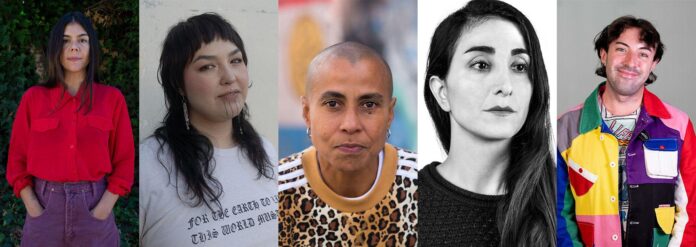Five Canadian artists, representing all corners of the vast land, learned today that they are at least C$25,000 ($18,700) richer, with a bigger payday possibly to come in autumn. The five were shortlisted for the prestigious Sobey Art Award, which offers total prize money of C$400,000 ($300,000), among the richest rewards available to artists. The winner, who will pocket C$100,000 ($75,000), will be named at the National Gallery of Canada (NGC) in Ottawa at a gala on 18 November.
The five finalists emerged from a longlist of 25 artists announced in late April, with the 20 who failed to advance each receiving C$10,000 ($7,500). The five remaining contenders are Séamus Gallagher (representing Atlantic Canada), Anahita Norouzi(from Québec), Michèle Pearson Clarke (from Ontario), Kablusiak (representing the Prairies and north) and Gabrielle L’Hirondelle Hill (representing the West Coast and Yukon).
“Each year, it is always so exciting to see people whose work I look up to, as well as friends and colleagues I admire, have their work highlighted through this award,” Gallagher says.
“It’s especially rewarding to join the talented group of inspiring Sobey Award alumni who are making important work and supporting their artistic communities across the country,” Pearson Clarke adds. Nozouri says the nomination “recognises years of hard work, and gives me the motivation to continue my current research”.
Works by the five nominees will be on view at the NGC from October 13 until early March 2024. “Year after year, we are amazed at the standards of excellence produced by contemporary artists from across the country,” says Bernard Doucet, the Sobey Art Foundation’s executive director.
In naming the finalists, Jonathan Shaughnessy, the NGC’s director for curatorial initiatives and chair of the 2023 Sobey Award jury, says, “The breadth of practices this year represents the multifaceted texture and strength of contemporary artistic talent in this country. From the longlist to the short, each of this year’s artists are deserving national and international recognition.”
Shaughnessy adds, “The work of the five finalists presents views on many urgent matters of our time, including 2SLGBTQ+ solidarities and representation, as well as critical questions regarding diasporic experience and Canadian identity.”
Séamus Gallagher, a lifetime Maritimer who hails from Moncton, New Brunswick, but currently resides in Kjipuktuk/Halifax, Nova Scotia, is a lens-based artist, infusing queer aesthetics with self-portraiture, video game engines and set construction. He will be starting an MFA programme at Carnegie Mellon University in Pittsburgh in the autumn.
Anahita Norouzi, who is originally from Tehran but has called Montreal home since 2018, is a research-driven multidisciplinary artist who works with a wide range of materials and media including sculpture, installation, photography and video. Her work often takes up the histories and legacies of archaeological and botanical research.
Michèle Pearson Clarke, who is Trinidadian by birth and now resides in Toronto, is an artist and educator working in photography, video and installation. Her work often focuses on experiences of grief and loss in Black and queer communities, and the possibilities for connection and solidarity that result.
Kablusiak, who was born in Yellowknife, Northwest Territories, raised in Edmonton, Alberta, and currently calls Calgary home, is a multidisciplinary Inuvialuk artist and curator. They work in a variety of modes and media, which have included photography, video, soapstone sculpture, felt, acrylic paint and more. Their work examines issues of connection and alienation within the Inuit diaspora and the ongoing impact of colonialism on Indigenous communities’ health and sexualities.
Gabrielle L’Hirondelle Hill is a Métis artist and writer who was born in Comox, British Columbia, and currently lives on the unceded territories of the Sḵwx̱wú7mesh, Musqueam and Tsleil-Waututh peoples/Vancouver. Her sculptures, which often incorporate textiles and found materials, address issues of ownership and property.
For those keeping score, the Prairies and northern Canada are on a bit of a roll, as both last year’s Sobey Award winner, Divya Mehra, and the 2021 winner, Laakkuluk Williamson Bathory, hailed from that region. The latter was unique in that her work included the skin of a polar bear she had shot. Historically, artists representing Ontario and Quebec have won the lion’s share of Sobey Awards, with five wins each. In 2020, at the height of Covid-19, all 25 longlisted artists received C$25,000.

























